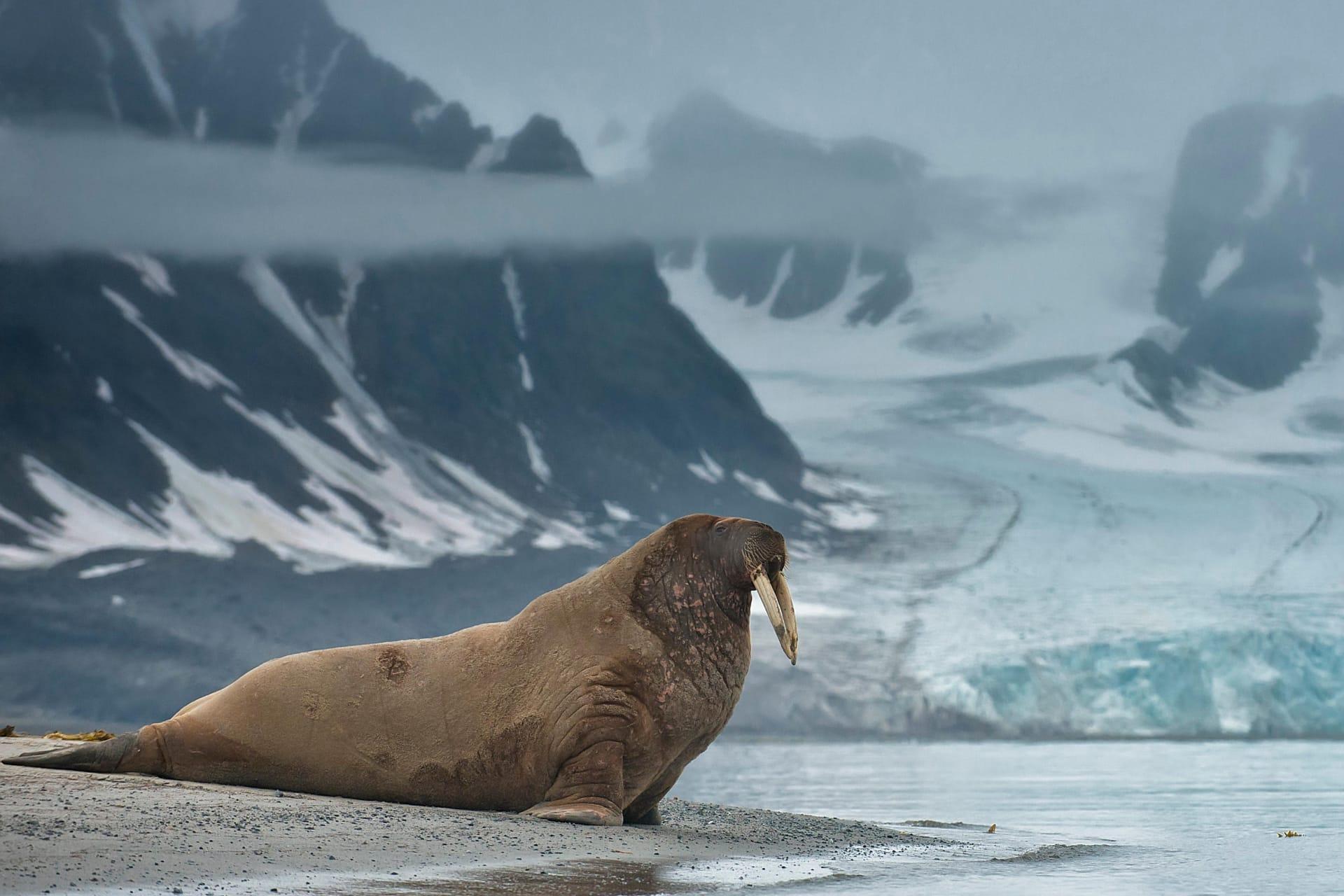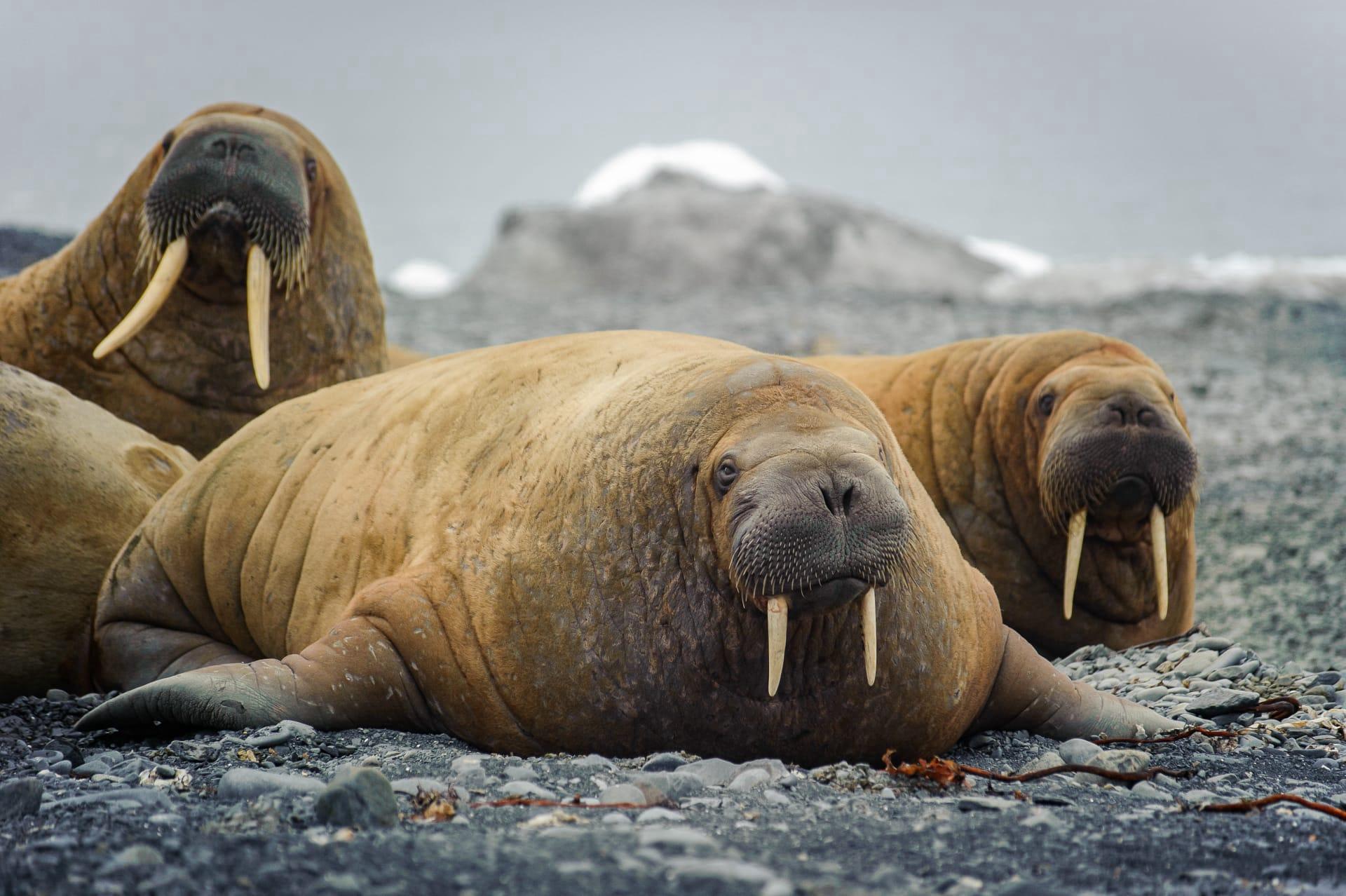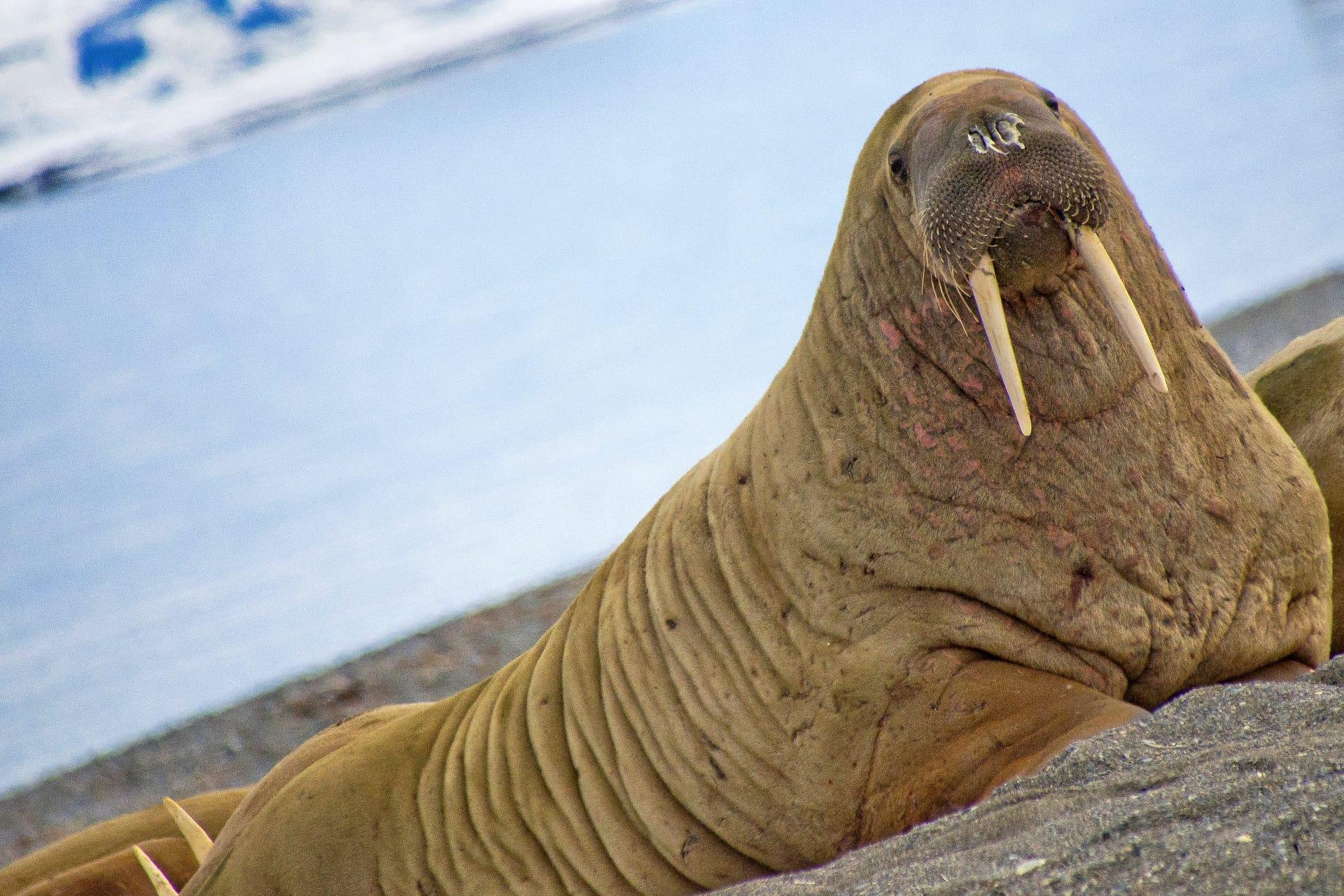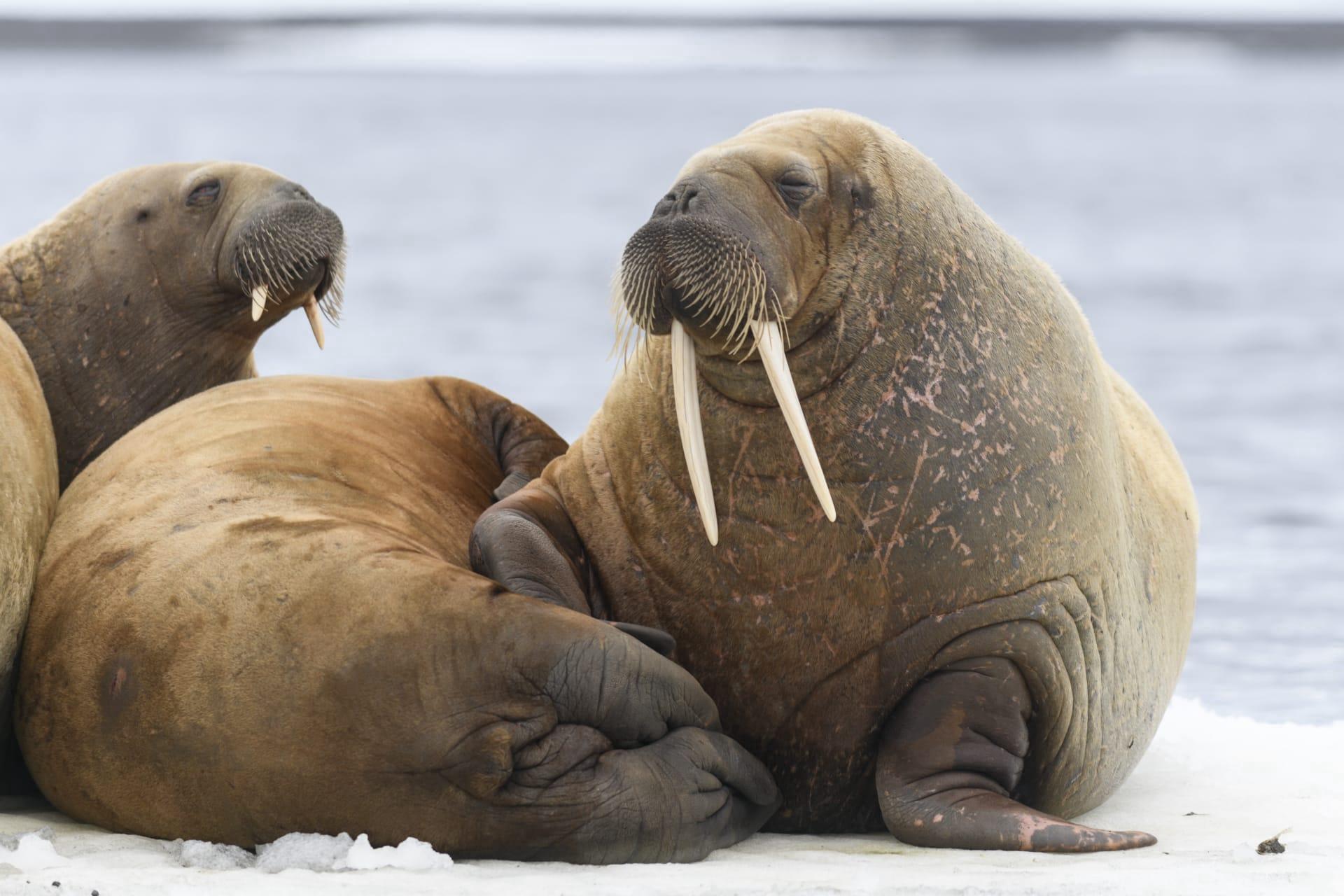1
Walruses are unique in the animal kingdom for their long, ivory tusks, which can grow up to 3 feet in length. These tusks are not just for show; they play a crucial role in the walruses' survival. They use them for hauling their massive bodies — weighing between 1,300 and 1,500 kilograms — out of frigid Arctic waters onto ice or land. These tusks also serve as potent defense tools against predators and are used in social interactions, such as establishing dominance within their groups.
Another fascinating aspect of walruses is their incredible whiskers, or vibrissae, which are highly sensitive and can detect changes in water currents. Each walrus sports about 600 to 700 of these whiskers, each measuring up to a foot long. These whiskers are not just ordinary hair; they are packed with blood vessels and nerves, making them extraordinary sensory tools. The walruses use them to search the ocean floor for food, detecting the slightest movements or presence of their favorite meals, such as clams.

2
Walruses have an extraordinary ability to slow down their heart rate, which is crucial for their survival in the harsh Arctic environment. This adaptation allows them to conserve oxygen while diving underwater. Typically, a walrus can hold its breath for about 5 to 10 minutes, but in extreme cases, they can extend this duration to up to 30 minutes. This ability not only helps them in foraging for food underwater but also aids in escaping from potential predators.
Despite their bulky and somewhat awkward appearance on land, walruses are surprisingly graceful swimmers. They can swim at speeds of up to 35 kilometers per hour, using their large flippers to propel themselves through the water with ease. This swimming ability is essential for migrating long distances in search of food and for escaping from natural predators like polar bears and killer whales.

3
Walruses have a unique social structure, often gathering in large groups called "haulouts." These gatherings can include thousands of individuals, creating a spectacular sight on ice floes or beaches. The social hierarchy within these groups is complex, often determined by age, size, and tusk length. During these gatherings, walruses communicate using a wide range of vocalizations, from deep bellows to high-pitched whistles, each serving a specific purpose in their social interactions.
Walruses are also known for their thick skin and blubber, which play a crucial role in their survival in cold Arctic waters. Their skin, which can be up to 10 centimeters thick, is one of the thickest of any mammal. Beneath the skin, they have a layer of blubber that can be up to 15 centimeters thick, providing essential insulation against the freezing temperatures. This blubber also serves as an energy reserve during times when food is scarce.

4
One of the lesser-known facts about walruses is their contribution to the Arctic ecosystem through their feeding habits. By digging in the seabed for clams and other invertebrates, they stir up the sediment, which plays a vital role in nutrient cycling. This activity helps to maintain the health and balance of the marine ecosystem, demonstrating the walruses' important role as a keystone species in their habitat.
Walruses also have a unique adaptation in their blood. They have large volumes of hemoglobin and myoglobin, which allow their blood to store more oxygen. This adaptation is particularly important for their extended dives underwater. It enables them to forage for longer periods and at greater depths, reaching up to 90 meters, to find food on the ocean floor.

5
Walruses are known for their longevity, with a lifespan that can extend up to 40 years in the wild. This longevity is remarkable given the harsh conditions of their Arctic habitat and the challenges they face, including limited food resources during certain times of the year and the threat of predators like polar bears and orcas.
Walruses have a significant cultural and economic importance to Indigenous peoples in the Arctic. For centuries, these communities have depended on walruses for food, clothing, tools, and even art. The tusks, in particular, are highly valued for carving and artwork. This relationship highlights the walrus's role not just in the ecosystem but also in human culture and history, underscoring the importance of conserving this remarkable species.